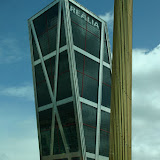
my trips
trips fun new places holidays recreation
יום חמישי, 8 ביולי 2010
יום חמישי, 2 ביולי 2009
Romania, Brasov
Brasov - General InformationLocation: Central Romania (Brasov County)Size: 28.5 sq. miles (74 sq. km)Elevation: 2,133 ft. (650 meters)Population: 320,000Inhabited since: 100 BCFirst documented: 1234 AD (Corona)
City Highlights
Fringed by the peaks of the Southern Carpathian Mountains and resplendent with gothic, baroque and renaissance architecture, as well as a wealth of historical attractions, Brasov is one of the most visited places in Romania.
Founded by the Teutonic Knights in 1211 on an ancient Dacian site and settled by the Saxons as one of the seven walled citadels*, Brasov exudes a distinct medieval ambiance and has been used as backdrop in many recent period films.
The location of the city at the intersection of trade routes linking the Ottoman Empire and western Europe, together with certain tax exemptions, allowed Saxon merchants to obtain considerable wealth and exert a strong political influence in the region. This was reflected in the city's German name, Kronstadt, as well as in its Latin name, Corona, meaning Crown City (hence, the coat of arms of the city which is a crown with oak roots). Fortifications were erected around the city and continually expanded, with several towers maintained by different craft guilds, according to medieval custom.
Brasov is home to what is said to be the narrowest street in Europe. The Rope Street (Strada Sforii) is approximately four feet wide and links Cerbului Street with Poarta Schei Street. The street was initially used as an access route by firefighters.
Stroll around the old Town Hall Square (Piata Sfatului) where you can admire colorfully painted and ornately trimmed baroque structures. Take a peek inside the Black Church (Biserica Neagra), the largest gothic church in Romania. Its name derives from damage caused by the Great Fire of 1689, when flames and smoke blackened its walls. The interior is impressive and well-kept and houses one of the largest organs in Eastern Europe
Malta
In Malta, you'll explore 7000 years of history yet live passionately in the present. You'll span the millennia with an astonishing array of things to discover. And wherever you go, the Islands' scenery and architecture provide a spectacular backdrop. The colours are striking, honey-coloured stone against the deepest of Mediterranean blues.The Maltese Islands have been described as one big open-air museum. What makes them unique is that so much of their past is visible today. Delve into the Islands' mysterious prehistory, retrace the footsteps of St Paul or see where the Knights of St John defended Christendom.Malta is holidaying as the mood takes you. And with near year-round sun, you can indulge in outdoor living at its best.







